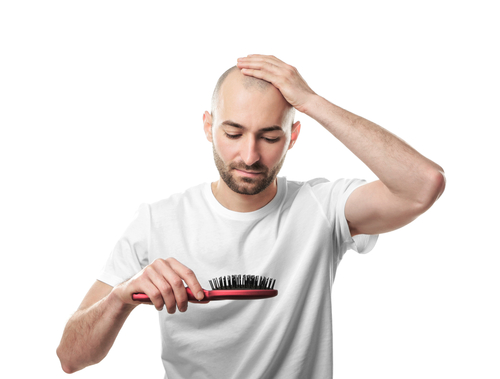
Parenting doesn’t just take a toll on moms. I’ve blogged about how Dad Makeover after the pregnancy of a partner is a thing. What was missing was make over of the dome.
Most women experience hair fall due to bodily changes during pregnancy or after childbirth, while most dad could also lose his hair due to genetics and hormonal changes.
For a lot of men, a head full of hair is equal to physical appeal and confidence. And with it lacking here and there, men who experience hair loss feel that they need to address the issue somehow.
That explains the variety of hair treatment for men available in the market, ranging from prescription medicines, foams to surgeries. Unfortunately, these treatments aren’t created equally, and the results are not the same across patients.
Are you a dad reader considering hair loss treatments as well or is your partner, spouse or hubby thinking of it?
Here are the things that you need to look into.
1. Topical
Treatments
Minoxidil is the most popular form of topical treatment for hair loss among
men. As an FDA-approved over-the-counter treatment, it is widely available to
men seeking to stop hair loss at the same time stimulate hair growth.
It was initially designed to treat and manage high blood pressure. Upon seeing
that it stimulates hair growth as a side effect, scientists figured that it
could also help address hair loss as well. Apparently, this drug helps expand
and dilate hair follicles which encourages and prolongs hair growth.
Minoxidil comes in a foam or liquid form and is available in two strengths: 2% and 5%. Is it right for you? It could be, especially if you’re not entirely bald and you’re 40 years or younger.
Expect some mild side effects, such as itchiness, andirritation of the scalp, but with continued use, it should help hair fromfalling out. Do note though that it is not your holy grail to halt baldness,and if you stop using it, you will start losing hair yet again.
2. Prescription Medicines
As far as prescription medicines are concerned, Finasteride is probably is the most popular of them all.
It is a prescription pill designed to prevent hormones from converting into DHT or dihydrotestosterone. DHT makes hair follicles smaller and tinier, and then eventually halts hair growth. As what it promises, you take one pill a day for the long term, and you’ll notice rate of baldness significantly reducing.
It won’t allow you to regrow your hair in already bald areas, but it pauses the balding process so you can keep as much hair that you already have. Is Finasteride right for you? It could be, only if you commit to taking the pill for the long haul.
If you decide to stop in two weeks because you don’t see any progress or for any other reason, the hair loss process resumes, and it could be more aggressive than ever. Also expect some side effects as well, including reduced libido and erectile problems.
Only a small percentage of users report these, but you might want to know as you go through your options.
3. Hair Loss Treatment Surgery
If you want to see permanent results without maintaining a pill or foam, then a hair treatment procedure is right for you. Hair transplant is a minor surgery that involves taking out hair from the back of the head and transplanting them to the bald patches.
There are two ways to do this:
- FUT, which takes out strips of hair from the donor site and dividing the piece into smaller portions to fill the recipient site. The aftermath of this procedure is visible scarring, but it’s nonetheless an effective procedure.
- FUE, which removes hair follicles one by one from the donor site and then transplanting them to the recipient site. The benefit is that you don’t see any scarring and the surgeon can find patterns to make hair regrowth look as natural as possible.
Is hair transplant right for you? It could be if you’re looking to do one procedure for a hair regrowth that lasts for a long time.
Some doctors may recommend you take minoxidil to aid with the hair regrowth, but the process alone is an effective way to combat hair loss, even reverse it. It should be noted though that hair transplant procedures are typically not covered by most health cards, and it is significantly more expensive than prescription pills and over-the-counter treatments.
Final Thoughts
Whatever the reason, hair loss can be a source of stress, frustration, and insecurity. It’s just good to know that you have treatment options and that most are pretty effective. The experiences and effects can vary from one person to another,so it pays to manage your expectations and commit with the treatment route you choose with a good amount of patience.
Whether you or your dude use foam or take a pill or do the transplant, remember that it takes sometime for these treatments to take effect.

